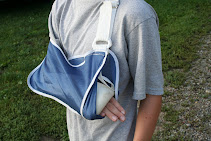It looks like Californians just don’t know when to quit a bad habit.
For the second time this month, the California Highway Patrol (CHP) and police agencies will be cracking down on motorists who just can’t keep their hands off their cell phones while driving.
Last August 11, 2009, more than 650 citations to motorists talking on mobile phones while driving. The citation comes with a hefty price as first-time offenders would have to pay a fine which ranges from $120 to $150.
According to CHP spokesman Sgt. Trent Cross, they will be aggressively seeking out and taking enforcement action against violators in the Bay Area. If it is unavoidable to use cell phones while driving, the police are encouraging the use of an earpiece or other hands-free device to talk on cell phones while driving.
Likewise, the police wants to emphasize and remind drivers, especially those under 18 that they are banned from using cell phone at all while driving.
Cellular phones have quickly become an indispensable tool for most people in this generation. According to the Cellular Telecommunications and Internet Association, there are more than 262 million wireless cell phone subscribers, representing 84 percent of the US population as of June 2008.
Because of the fact that almost everyone has a cellular phone and the fact that there is always a demand to stay connected and up to date, even if common sense dictates that using a cell phone while driving is dangerous, a lot of people still try to get away with it because they don’t think anything bad is going to happen if they take a few seconds to text while driving or to chat.
But it’s those seconds used in talking or texting that make a difference between safety and an accident. According to the Insurance Institute for Highway Safety, phone conversation tasks typically decreased reaction times and travel speeds and increased lane deviations and steering wheel movements.
Receiving and sending text messages also considerably impaired the driver’s performance, it has been proven to lead to decrements in driving behavior, particularly reaction time and lane keeping ability.
Some citizens may find these cell phone bans as a bother and the constant crackdown of the authorities as a hassle. But in the long run, these actions could save these errant motorists’ lives. Using a cell phone while driving may seem like a small thing but drivers shouldn’t underestimate the purpose of the law and overestimate their driving skills.
For the second time this month, the California Highway Patrol (CHP) and police agencies will be cracking down on motorists who just can’t keep their hands off their cell phones while driving.
Last August 11, 2009, more than 650 citations to motorists talking on mobile phones while driving. The citation comes with a hefty price as first-time offenders would have to pay a fine which ranges from $120 to $150.
According to CHP spokesman Sgt. Trent Cross, they will be aggressively seeking out and taking enforcement action against violators in the Bay Area. If it is unavoidable to use cell phones while driving, the police are encouraging the use of an earpiece or other hands-free device to talk on cell phones while driving.
Likewise, the police wants to emphasize and remind drivers, especially those under 18 that they are banned from using cell phone at all while driving.
Cellular phones have quickly become an indispensable tool for most people in this generation. According to the Cellular Telecommunications and Internet Association, there are more than 262 million wireless cell phone subscribers, representing 84 percent of the US population as of June 2008.
Because of the fact that almost everyone has a cellular phone and the fact that there is always a demand to stay connected and up to date, even if common sense dictates that using a cell phone while driving is dangerous, a lot of people still try to get away with it because they don’t think anything bad is going to happen if they take a few seconds to text while driving or to chat.
But it’s those seconds used in talking or texting that make a difference between safety and an accident. According to the Insurance Institute for Highway Safety, phone conversation tasks typically decreased reaction times and travel speeds and increased lane deviations and steering wheel movements.
Receiving and sending text messages also considerably impaired the driver’s performance, it has been proven to lead to decrements in driving behavior, particularly reaction time and lane keeping ability.
Some citizens may find these cell phone bans as a bother and the constant crackdown of the authorities as a hassle. But in the long run, these actions could save these errant motorists’ lives. Using a cell phone while driving may seem like a small thing but drivers shouldn’t underestimate the purpose of the law and overestimate their driving skills.



